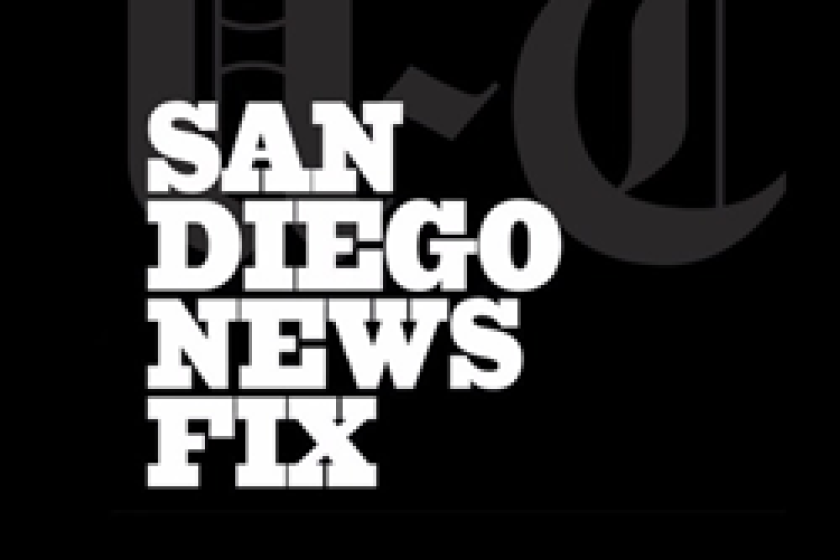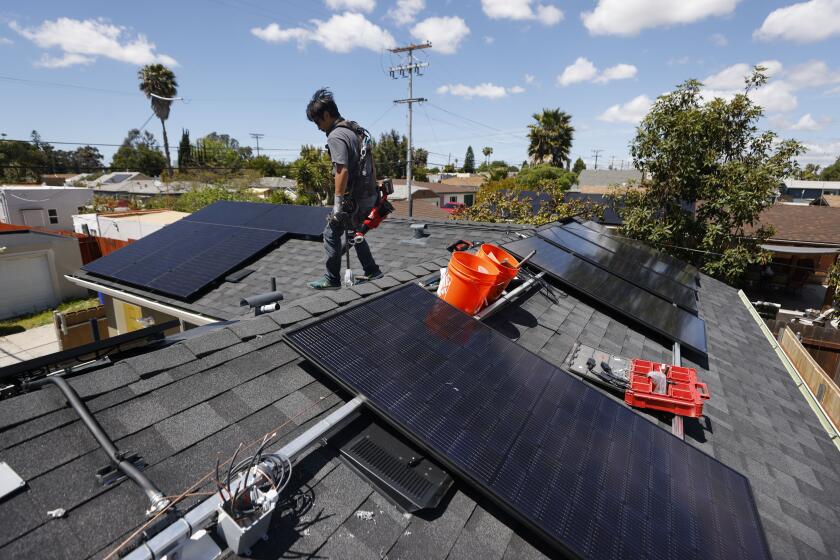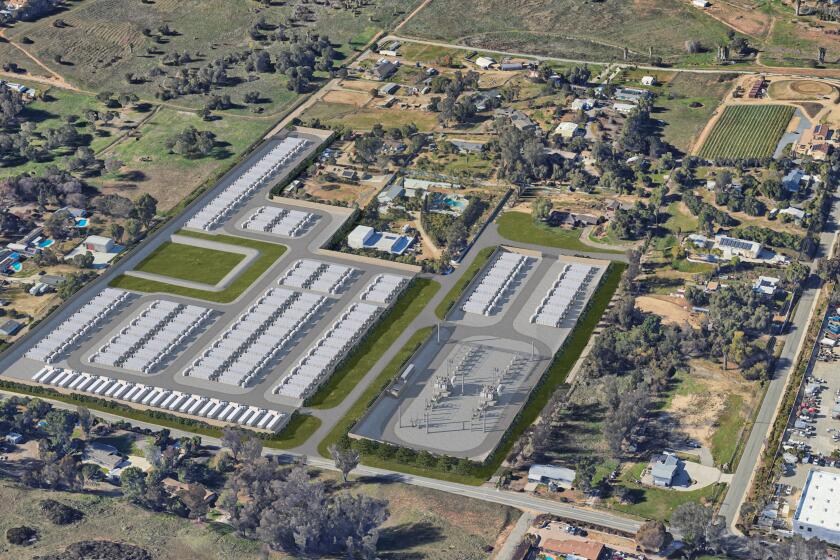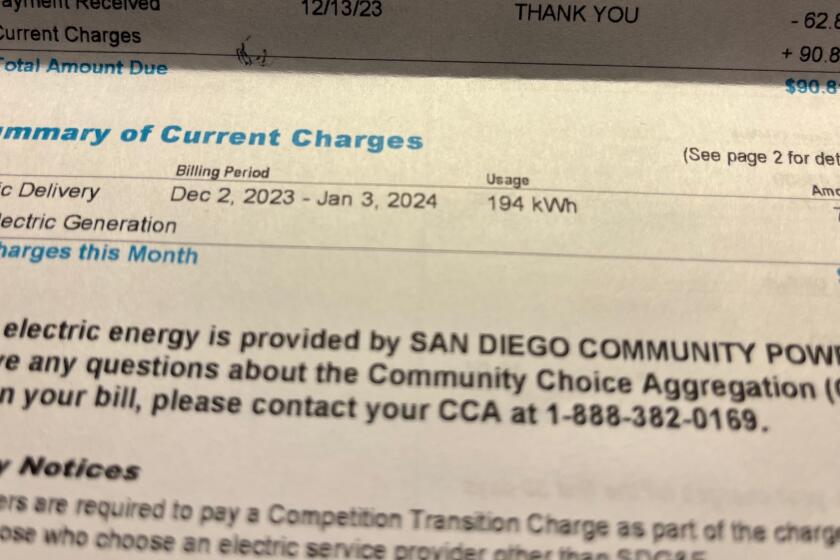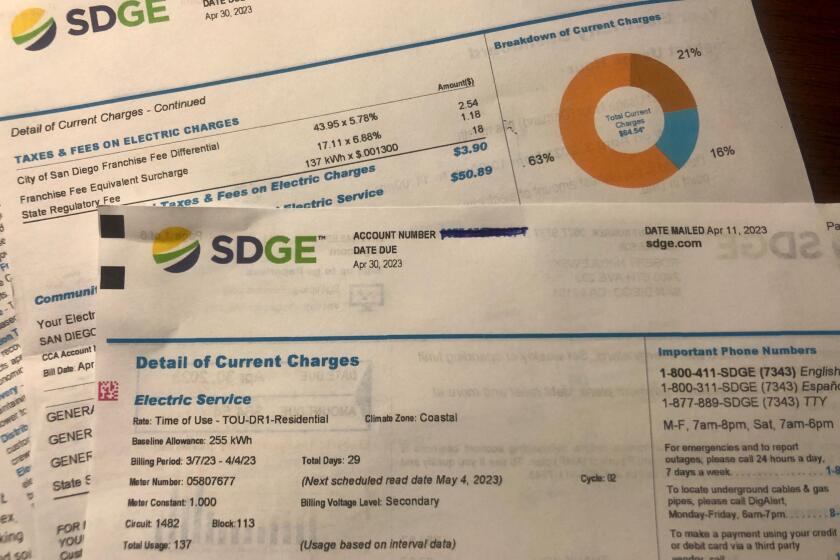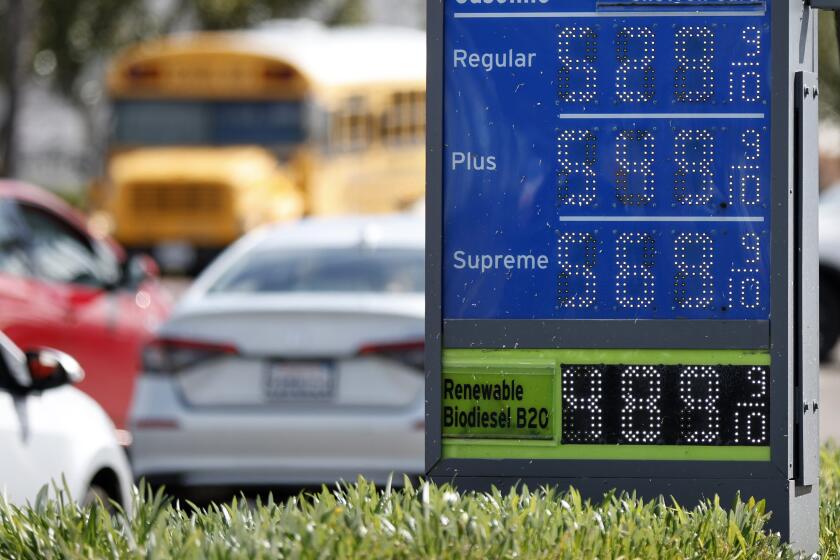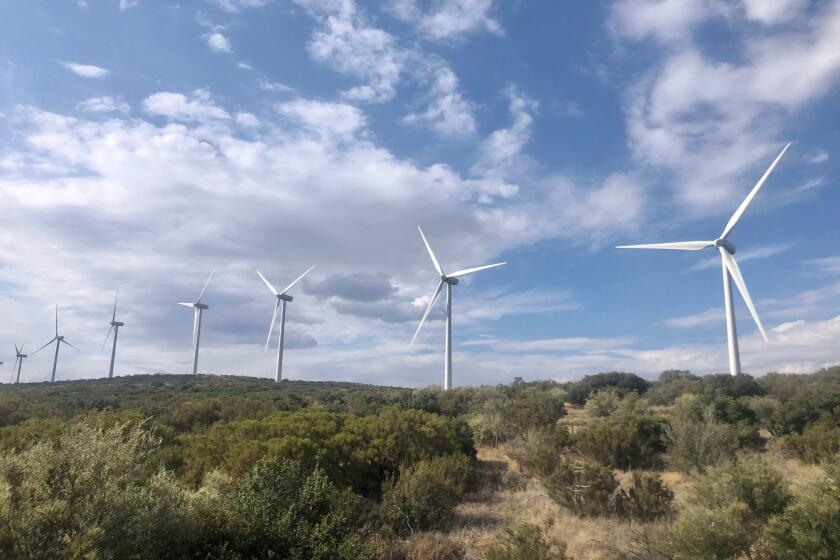New San Diego regional energy program looking at 720,000 potential customers
Five-city board will consider rolling out the program in phases, starting in 2021
Specifics still need to be hammered out but the contours of the new community choice aggregation, or CCA, program made up of five cities in the greater San Diego region are beginning to take shape.
The cities of San Diego, La Mesa, Encinitas, Chula Vista and Imperial Beach formed a joint powers authority Oct. 1 to govern the CCA and representatives of the cities held their first board meeting Thursday in La Mesa.
Though the board did not pass any concrete measures in its inaugural meeting, a few details emerged. Among them, the CCA will serve about 720,000 potential customers who are currently served by San Diego Gas & Electric, the 140-year-old utility that is now seeing at least a partial end to its monopoly status in the area.
Subscribe to our daily news podcast, with new episodes every weekday evening.
The volume of customers will make the new group the second-largest community choice energy program in California in terms of energy load, Shawn Marshall, executive director of LEAN Energy U.S., an information and marketing firm that has helped other CCAs launch, told the board.
In addition, staff and consultants recommended rolling out the CCA in 2021 in three phases — starting perhaps in March 2021 with municipal accounts, then integrating mostly commercial accounts about four months later and then finishing up with the rest of the largest segment, which is residential accounts.
The intended enrollment schedule is one part of an implementation plan the board has to approve and then submit to the California Public Utilities Commission within the next two months.
Mark Fulmer, a consultant with Oakland-based MRW & Associates, said the implementation plan is not a detailed business strategy so board members should write it in general terms to ensure it does not put too many constraints on the CCA. “It’s giving the commission and state regulators an idea of what your priorities are and where you’re wanting to go,” he said.
The joint powers authority will seek a line of credit of about $5.5 million to launch the CCA, followed by a working capital loan of up to $40 million to cover the cost of power and early operations, said Cody Hooven, the chief sustainability officer at the city of San Diego. Those costs are considered in line with startup costs of other recently formed CCAs in the state.
The city of San Diego, as an incentive to get the other cities to join, has offered to pick up the initial startup costs, but the joint powers authority will eventually repay the city through revenues generated by the project.
Requests for proposal will go out to prospective vendors. A chief executive officer is expected to be selected in the first or second quarter of 2020.
For implementation plan purposes, Hooven said staff and consultants are modeling a 4 percent to 5 percent discount over the rates SDG&E is charging. The board will come back Nov. 21 and Dec. 9 to finalize the plan.
Marshall said CCAs typically offer two or three options of renewable and carbon-free energy sources for customers. Staff suggested a 50 percent minimum as a default plan while offering a more expensive option of 100 percent renewables for customers who want to sign up for it.
There was some discussion from board members about offering more or fewer options and higher or lower percentages but the board decided to tackle specifics later.
“We’re indicating a stepping off point, provided we’re not overly constraining ourselves to basically hit those higher markers,” said board member and Chula Vista City Councilman Stephen Padilla. “I agree with all my colleagues. We definitely want to outperform” SDG&E.
Board members discussed where and when to host future meetings, with early indications leaning toward San Diego because it is centrally located and possibly having the meetings at night so more members of the public could attend.
For now, the CCA is called the San Diego Regional Community Choice Energy Authority but a new name will be selected soon.
Board member and Imperial Beach City Council member Mark West suggested incorporating San Diego’s slogan of “America’s Finest City” into the name. “Something simple and short,” he said.
The cities of Carlsbad, Solana Beach and Del Mar have moved forward on plans to establish their own CCA, called the Clean Energy Alliance, in 2021 — and are looking to add partners such as Oceanside, Vista, San Marcos and Escondido. Solana Beach already operates a standalone CCA but wants to be part of a larger group.
The San Diego County Board of Supervisors and the city council in Santee have each voted to join the CCA movement but have decided to wait and see before partnering in a joint powers agreement with other entities.
“Instead of rushing into things, I think we should take the time and make the right decision,” County Supervisor Greg Cox said Oct. 15.
Under the CCA model sweeping across California, local governments assume the job of buying the source of power in a given jurisdiction — a responsibility that has long been the sole domain of investor-owned utilities. Traditional power companies do not go away upon the establishment of a CCA because utilities still perform the rest of their duties, such as transmission and distribution of energy, as well as customer billing and services.
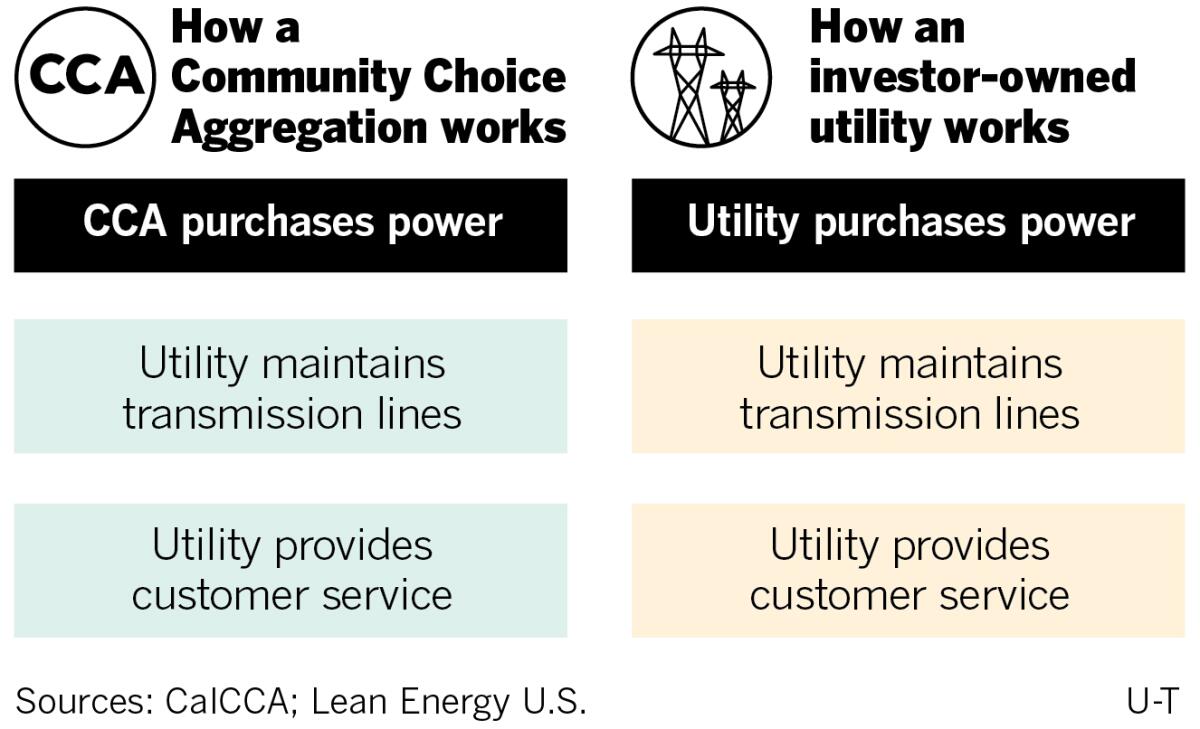
Technically, CCAs can purchase virtually any source of power (natural gas, solar, wind, etc.) but California CCAs promote their ability to provide customers energy from more renewable sources at rates equal to or lower than traditional utilities.
By taking over the purchasing of power, CCAs can generate revenue that can build up financial reserves to ensure their rates stay equal to or lower than utilities. They can also use the money to establish clean energy programs (such as building electric vehicle charging stations) and investing in renewable energy projects.
CCAs have their critics who, among other things, point to the city of San Diego’s track record that includes missteps with pension funding and water meter overcharges and worry trouble looms by jumping into a rapidly changing and complex energy sector.
Last year, MRW estimated a CCA could offer rates about 5 percent lower than SDG&E for customers within the city and generate an estimated average of $110 million per year, translating into net income of about $1.75 billion over a 16-year period. As for the cities joining San Diego, another consulting firm has predicted ratings savings of about 2 percent compared to SDG&E.
The state’s first CCA, in Marin County, opened for business in 2010. There are now 19 up and running and six more are expected to roll out by the end of next year — Desert Community Energy (Palm Springs, Palm Desert and Cathedral City), Western Community Energy (Canyon Lake, Eastvale, Hemet, Jurupa Valley, Norco, Perris and Wildomar), and the cities of Baldwin Park, Hanford, Palmdale and Pomona.
It’s been estimated that about 80 percent of the state’s load will be served by jurisdictions that have adopted CCAs.
Get U-T Business in your inbox on Mondays
Get ready for your week with the week’s top business stories from San Diego and California, in your inbox Monday mornings.
You may occasionally receive promotional content from the San Diego Union-Tribune.
